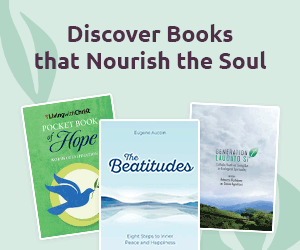

The Papal Conclave: A Timeline
Matthew Neugebauer
Thursday, May 1, 2025

While we continue to commend our dear Pope Francis into the arms of God, Catholics around the world have another responsibility beginning May 7: the election of a new Supreme Pontiff.
Yes, you read that right. You too have an essential part to play in the next Conclave: to pray. You are called to gather with family, friends, and fellow parishioners, and devote time in your private prayers, to express to God your hopes, dreams, anxieties, and concerns about the future of the People of God. You are called to ask the Holy Spirit to give the College of Cardinals a fresh dose of courage, wisdom, and joy as they choose our next Pope.
However, you might also be wondering what the Cardinals are up to. I’ve prepared a timeline to walk you through it!
 Voting sessions:
Voting sessions:
 If there is a valid election:
If there is a valid election:
What is the Conclave process?
Papal Conclaves are governed by St. John Paul II’s 1996 Apostolic Constitution Universi Dominici Gregis, which Pope Benedict XVI revised in 2007 and 2013. It sets out very precise and exact rules (such as what the voting cards have to look like! See #65) to make sure the result is clear and universally acknowledged. Here’s what’s happening in Rome, according to these rules and the overall schedule:- April 21: Pope Francis dies; the entire College of Cardinals is summoned to Rome and they all take up residence in the Casa Santa Marta.
- April 22: Cardinals take oaths of secrecy and begin daily meetings called “General Congregations” to pray, get to know each other, discuss and oversee affairs of the Church. These meetings include Cardinals over the age of 80.
- One of their duties is to set the date of the Conclave, which has to be between 15 and 20 days after the previous pope dies (#37).
- April 23-May 6: Mourning Pope Francis: lying in state, funeral, interment, and Novendiali Masses.
- General Congregations continue.
- Conclave begins May 7.
The Conclave
May 7:- In the morning, Cardinal Giovanni Battista Re, Dean of the College of Cardinals, presides over the Votive Mass Pro Eligendo Romano Pontifice (“for the election of the Roman Pontiff”) in St. Peter’s Basilica.
- In the afternoon, the Cardinal-electors – all Cardinals in present and in good standing under the age of 80 – process from the Pauline Chapel to Sistine Chapel while the choir sings the Litany of Saints.
- Both Cardinal Re and Sub-dean Cardinal Leandro Sandri are over 80, which means that they're ineligible to vote. Cardinal Pietro Parolin, Pope Francis’ Secretary of State, will preside over the voting sessions of the Conclave.
- Electors take another Oath of Secrecy and take their assigned seats. Archbishop Diego Ravelli, Master of Papal Liturgical Celebrations declares Extra omnes (literally, “everyone, out!”) and locks the Sistine Chapel door for the first voting session. 90-year-old Cardinal Raniero Cantalamessa OFM Cap, Preacher Emeritus of the Papal Household, gives a meditation “concerning the grave duty incumbent on them and thus on the need to act with right intention for the good of the Universal Church” (#52). Cardinal Cantalamessa and Archbishop Ravelli are the only non-electors allowed to stay in the Sistine Chapel.
 Voting sessions:
Voting sessions:
- Electors write the name of their choice on their paper ballot.
- One-by-one, they present their paper ballots to the Scrutineers, who are chosen by lot from among the College.
- Votes are read out and counted one by one.
- Revisers, also chosen by lot, check the ballots and confirm the votes.
- Ballots are burned with chemicals to make black smoke in the Sistine Chapel chimney: the crowd in St. Peter’s Square sighs.
- Electors proceed immediately to a second ballot, repeating the process above.
- Up to four voting sessions per day, with a break for lunch after the second session and break for the evening after the fourth.
- This continues for three days, followed by a one-day break, then another seven voting sessions, then a break, then repeat.
 If there is a valid election:
If there is a valid election:
- Cardinal Parolin, or (if he is elected) the senior-most Cardinal-elector “asks the consent of the one elected in the following words: Do you accept your canonical election as Supreme Pontiff? And, as soon as he has received the consent, he asks him: By what name do you wish to be called?” (#87).
- The new pope replies! The Conclave is formally finished, the Sistine Chapel is unlocked and Cardinal Re and other officials are invited in.
- Cardinals and others greet the new pope.
- Ballots are burned with chemicals for white smoke in the Sistine Chapel chimney: the crowd in St. Peter’s Square cheers!
- Cardinal Dominique Mamberti, the senior-most Cardinal Deacon, announces Habemus Papam from the loggia of St. Peter’s Basilica.
- The new pope greets the crowd and gives the Urbi et Orbi blessing.
- Installation Mass in St. Peter’s Square
- Possession of St. John Lateran Basilica, the Cathedral of the Diocese of Rome
Related Articles:
<<













